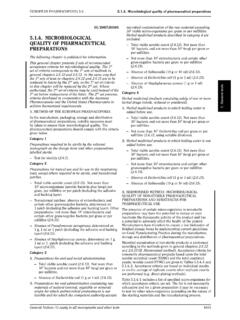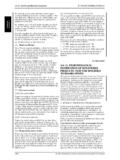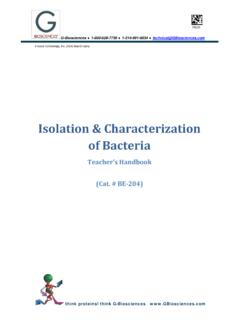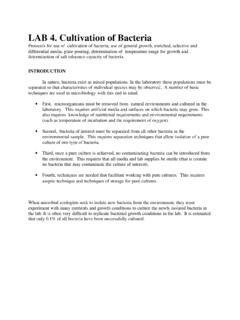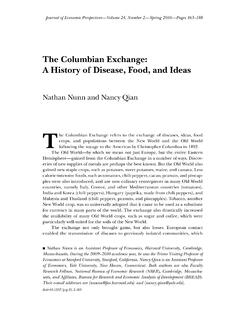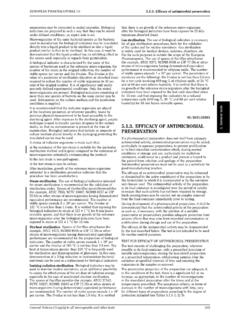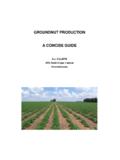Transcription of 2.6.12. MICROBIOLOGICAL EXAMINATION OF NON-STERILE ...
1 Total viable aerobic countEUROPEAN PHARMACOPOEIA MICROBIOLOGICALEXAMINATION OF NON-STERILEPRODUCTS: TOTAL VIABLEAEROBIC COUNTThis general chapter presents 2 sets of tests. The 1stset givesthe reference methods for determining compliance withmonographs. Reference to this chapter in a monographtherefore implies compliance with the 1stset of tests,unless use of the 2ndset of tests has been authorised. Thetests in the 2ndset also constitute official methods of theEuropean Pharmacopoeia and may be referred to as such,notably in applications for marketing authorisation. Itis intended to replace the 1stset by the 2ndset once themonographs concerned have been revised.
2 The 2ndsetpresents tests developed in co-operation with the JapanesePharmacopoeia and the United States Pharmacopeia toachieve harmonised METHOD OF THE EUROPEAN PHARMACOPOEIAThe tests described hereafter will allow quantitativeenumeration of mesophilic bacteria and fungi that may growunder aerobic tests are designed primarily to determine whetherornotasubstancethatisthesubjectof amonographinthe Pharmacopoeia complies with the microbiologicalrequirements specified in the monograph in question. Whenused for such purposes, follow the instructions given below,including the number of samples to be taken, and interpretthe results as stated below. The tests may also be used forthe test forEfficacy of antimicrobial preservation( )asdescribed in the Pharmacopoeia.
3 They may furthermore beused for monitoring raw material quality and may be usedin association with guidelines on MICROBIOLOGICAL quality( ). When used for such purposes, for example by amanufacturer for raw materials and/or finished productmonitoring or for process validation, the conduct of thetests including the number of samples to be taken and theinterpretation of the results are matters for agreementbetween the manufacturer and the competent out the determination under conditions designedto avoid accidental contamination of the product to beexamined. The precautions taken to avoid contaminationmust be such that they do not affect any micro-organisms thatare revealed in the test.
4 If the product to be examined hasantimicrobial activity, this must be adequately inactivators are used for this purpose, their efficacy andnon-toxicity versus micro-organisms are the total viable aerobic count by the membranefiltration method or the plate-count method, as prescribed inthe (MPN)methodisreservedfor bacterial counts when no other method is the nature of the product and the expected numberof micro-organisms. Any method that is chosen must beproperly used in conjunction with ,thepour-plate method, the surface-spread method and themembrane filtration method may be OF THE SAMPLES ampling plan. Sampling of the product must follow awell-defined sampling plan.
5 The sampling plan will bedependent on factors such as batch size, health hazardassociated with unacceptably highly contaminated products,the characteristics of the product and the expected level ofcontamination. Unless otherwise prescribed, use sample(s) of10gor10mlofthesubstanceorpreparationto beexamined,taken with the precautions referred to above. Select thesample(s)atrandomfromthebulkmaterialo rfromtheavailable containers of the preparation. If necessary, toobtain the required quantity, mix the contents of a sufficientnumber of containers to provide each sample, depending example of a sampling plan applicable to productswhere homogeneity with respect to the distribution ofmicro-organisms may be a problem, is the and investigated separately.
6 The three recognisedclasses are:(i) acceptable samples, samples containing less thanmCFU (colony-forming units) per gram or millilitre, wheremis the limit specified in the relevant monograph;(ii) marginal samples, with more thanmCFU but lessthan 10mCFU per gram or millilitre;(iii) defective samples, containing more than products. Dissolve or dilute 10 g or10 ml of the product to be examined in buffered sodiumchloride-peptone solution pH or in another suitableliquid. In general a one in ten dilution is prepared. However,the characteristics of the product or the required sensitivitymay necessitate the use of other ratios. If the product isknown to have antimicrobial activity, an inactivating agentmay be added to the diluent.
7 If necessary, adjust the pH toabout pH 7 and prepare further serial tenfold dilutions usingthe same products insoluble in ml of the product to be examined in buffered sodiumchloride-peptone solution pH or in another suitableliquid. In general a one in ten suspension is prepared, but thecharacteristics of some products may necessitate the use oflarger volumes. A suitable surface-active agent such as 1 g/lof polysorbate 80 may be added to assist the suspension ofpoorly wettable substances. If the product is known to haveantimicrobial activity, an inactivating agent may be added tothe diluent. If necessary, adjust to about pH 7 and preparefurther serial tenfold dilutions using the same products.
8 Homogenise 10 g or 10 ml of the product tobe examined with not more than half its weight of sterilepolysorbate 80 or another suitable sterile surface-activeagent, heated if necessary to not more than 40 C, or inexceptional cases to not more than 45 C. Mix carefullyand if necessary maintain the temperature in a water-bathor in an incubator. Add sufficient pre-warmed bufferedsodium chloride-peptone solution pH to make a one inten dilution of the original product. Mix carefully whilstmaintaining the temperature for the shortest time necessaryfortheformationofanemulsionandi nanycasefornotmore than 30 min. Further serial tenfold dilutions may beprepared using buffered sodium chloride-peptone solutionpH containing a suitable concentration of sterilepolysorbate 80 or another sterile surface-active patches.
9 Remove the protective coversheets ( release liners ) of ten patches of the transdermalpreparation using sterile forceps, and place them, theadhesive side upwards, on sterile glass or plastic trays. Coverthe adhesive surface with sterile gauze (or a woven-filtertype monofilament polymer grid), if necessary, and transferthetenpatchestoaminimumvolumeof5 00mlofbufferedsodium chloride-peptone solution pH containing suitableinactivators such as polysorbate 80 and/or lecithin. Shake4398 See the information section on general monographs (cover pages)EUROPEAN PHARMACOPOEIA Total viable aerobic countthe preparation vigorously for at least 30 min (preparation A).
10 Prepare another ten patches in the same way, place them ina minimum volume of 500 ml of broth medium D and shakevigorously for at least 30 min (preparation B). EXAMINATION OF THE SAMPLEM embrane filtration. Use membrane filters having a nominalpore size not greater than m and whose effectivenessto retain bacteria has been established. The type of filtermaterial is chosen such that the bacteria -retaining efficiencyis not affected by the components of the sample to beinvestigated. Cellulose nitrate filters, for example, may beused for aqueous, oily and weakly alcoholic solutions, andcellulose acetate filters, for example, for strongly alcoholicsolutions.
